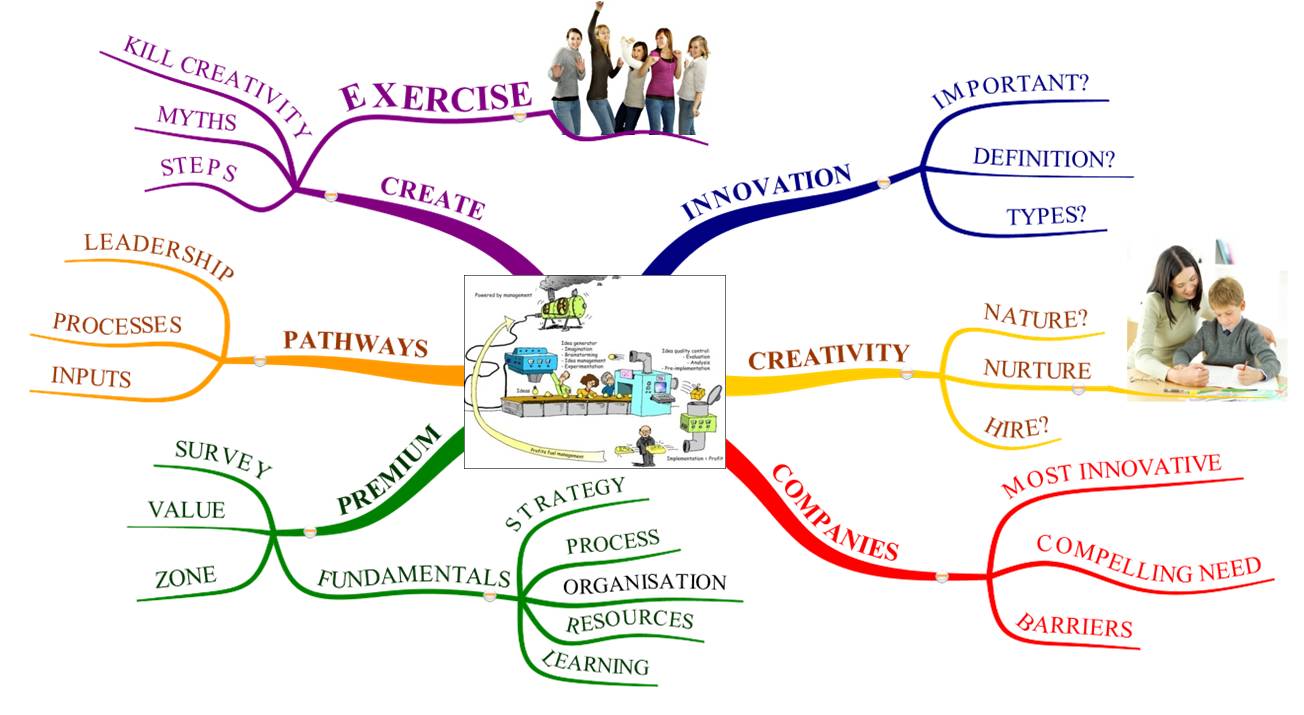DCI-12 Business Creativity – Module Overview
In this module we build on the start made in DCI-06 Organisational Creativity & Innovation, by looking at organisations considered to be innovative, what may be making them innovative, and then looking at what some experts say is needed to be successful with Innovation.
There has been some great research and writing done on creativity and innovation by a range of people from well established academics such as Teresa Amabile and Paul Torrance, to more corporate focussed people like John Kao and Tom Peters. But what has been clear is that there is no one definition or acceptance of how to create an innovative organisation. Nor should there be.
In this course on Deliberate Creativity & Innovation we had touched on a wide range of knowledge and techniques that we have seen help organisations become more innovative. However every organisation is different, and we know that the Context in which you find yourself plays a major part in defining how you might embrace creativity and innovation.
In this module we start with a quick look at those companies often voted as Most Innovative by magazines such as Business Week and Fortune, and challenge you to consider if they are correct, and why they may or may not be. We’ll look at a range of possible models you might use to help you create your own innovative organisation, and by looking at the myths of innovation and tips to ‘kill’ creativity you may learn what to do and what not to do.
But ultimately it is Action that creates change and here we challenge you to continue your study, but also start to take steps now to help create a more creative and innovation organisation. We wish you well, and hope you have great fun and success.
[easy-social-share]
Learning Outcomes
Content
Exercises
Your Most Innovative Organisations
Each year BusinessWeek identifies its 50 Most Innovative companies, usually based on a survey of business leaders. But is this really the best way to recognize a leader in innovation? What about all the smaller and less well known organisations that aren’t being seen?
In Good To Great, Jim Collins said that truly great companies, led by often ‘invisible’ great leaders, are more than just successful, they are innovative.
Your task is to see if you can recognize some innovative organisations, beyond the big obvious one. More than this, can you identify what it is that makes them innovative, what are they doing to be so successful in the innovation stakes.
Remember that to become successful in anything we need to be able to define and recognise what it is we want. The same applies to innovation.
Creating Innovative Organisations
This activity is significant and will take considerable time to do, but is highly recommended as a way for you to advance your knowledge and ability to embrace creativity and create an innovative organisation.
At this stage if you have been doing the various module exercises and reviewing website and literature on creativity and innovation, you will likely have considerable knowledge on organisational creativity and innovation. But what is the value of the knowledge you have gained? Indeed, what knowledge and learning have you gained?
These are interesting questions, that can best be answered by putting your knowledge to work, which is what this exercise does.
In the document in the worksheets area you will find instructions which build on the overview I give in the final video of this module. Have a look at this and consider how you would approach answering the challenges laid down. In each scenario posed, the request from the CEO is for you to recommend an approach to bringing innovation into their organisation. You can do as many of these as you like, but I suggest starting with one that may be similar to your own field.
Knowing what you now know about creativity and innovation, what would you recommend? Note that the exercise indicates you will be asked for a 15 minute presentation to the CEO and his/her team. When we do this in a classroom situation, this actually happens. In your case, use this as a guide to preparing a succinct recommendation.
This exercise is optional, but highly recommended and if you choose to do it, we are certain you will be significantly better placed to lead innovation in your organisation.
Thanks and have fun


